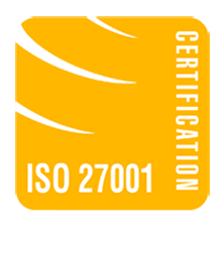
Transforming Sales and Operations Planning through AI and Automation
The Essence of S&OP and Its Traditional Roadblocks
Sales and Operations Planning (S&OP) is a strategic process designed to align a company’s demand with its supply, ensuring that business goals are met through effective operational planning.
This intricate process involves multiple key stages: data gathering, demand planning, supply planning, meeting and reconciliation, and execution. Despite its significance, traditional S&OP methodologies frequently encounter numerous obstacles. Siloed departmental operations, sluggish adaptation to shifting market demands, and reliance on archaic technological tools can significantly hinder a company’s ability to execute its strategic objectives effectively.
These challenges manifest in various operational inefficiencies, such as inventory mismanagement, missed sales opportunities, and subpar customer service, which underscore the need for a more agile and responsive S&OP approach.
AI and Automation: Catalysts for S&OP Transformation
The incorporation of Artificial Intelligence (AI) and automation into the S&OP process represents a seismic shift towards overcoming these traditional limitations. AI’s predictive analytics and machine learning capabilities offer a significant upgrade in forecasting accuracy, allowing businesses to anticipate market demands with unprecedented precision.
Meanwhile, automation streamlines operational tasks, from inventory management to supply chain coordination, reducing manual errors and improving overall efficiency.
This synergy between AI and automation not only enhances decision-making but also fosters a more collaborative and integrated approach across different functional areas, crucial for the holistic success of S&OP.
Strategic Implementation for Enhanced Outcomes
Transitioning to an AI and automation-enhanced S&OP process necessitates a strategic and phased approach. Initiating pilot projects can serve as a proof of concept, demonstrating the tangible benefits of technological integration.
Crucial to this process is the engagement of cross-functional teams from the outset, ensuring that the implementation of AI and automation technologies aligns with the overarching goals of the S&OP process.
This collaborative approach guarantees a seamless adoption of new technologies, facilitating a smooth transition to more advanced operational planning methods.
Flowlity’s Contribution to Advanced S&OP
At the edge of this revolution stands Flowlity, with its suite of modules designed to further refine S&OP processes.
It’s worth noting how Flowlity’s technology can complement these advancements. By leveraging its specialized modules for forecasting, inventory optimization, replenishment, capacity planning, and collaboration, Flowlity helps businesses achieve a more agile and efficient S&OP process.
Conclusion: The Future of S&OP
The shift towards AI and automation in S&OP is not merely a trend but a necessary evolution to stay competitive in today’s fast-paced market.
This approach promises not only to address the limitations of traditional methods but also to unlock new levels of efficiency and responsiveness, ensuring businesses are well-equipped to meet the challenges of tomorrow.

E-commerce, Ecology, and Continuous Improvement
Explore the economic impact of poor retail inventory management & a French law on unsold goods, with e-commerce’s ecological shift.

E-commerce trends: Tips by Jeremie Serout!
What are the latest e-commerce trends and best practices in e-commerce? Jérémie Serout, Sales Manager at parcelLab is sharing tips and customer stories with us!

Convenience and the E-commerce Supply Chain
Explore how the e-commerce landscape has evolved, driven by increasing complexity, rising consumer expectations, and global competition.

